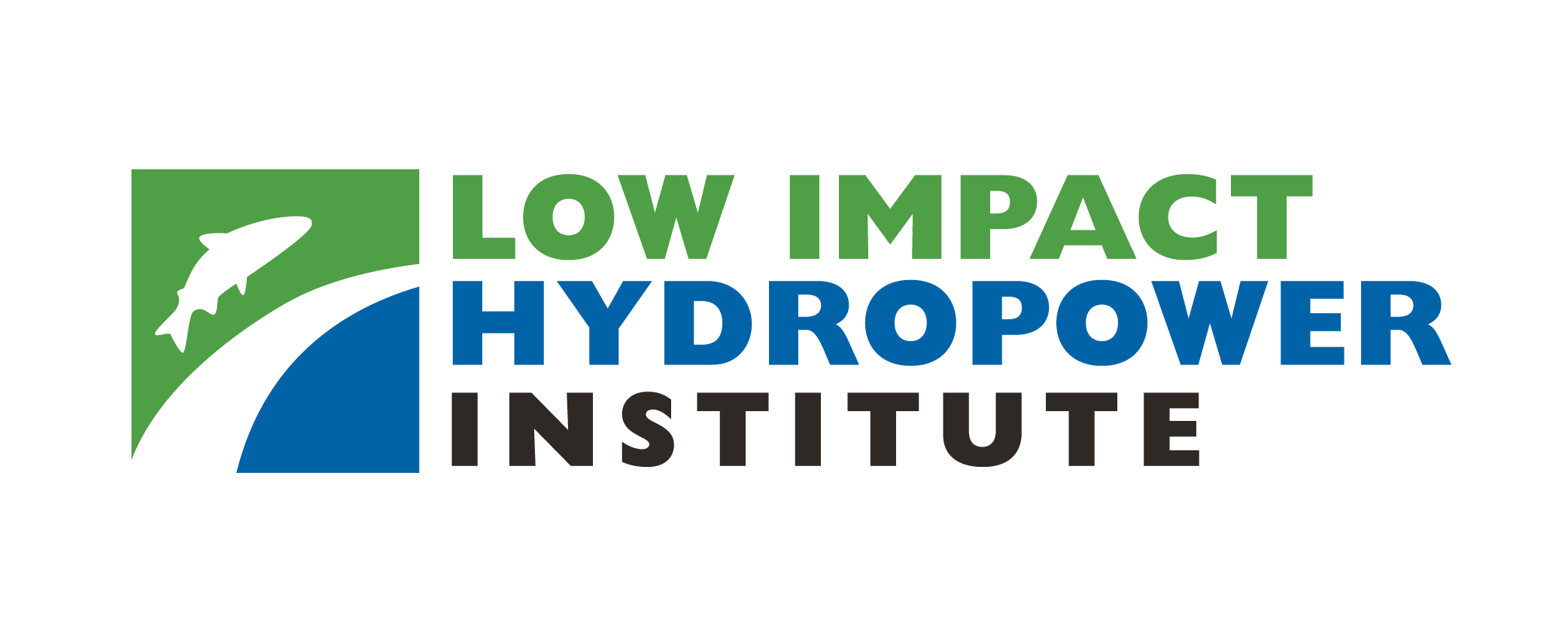LIHI 證書 #131 – 愛達荷州切斯特引水項目

| 項目名稱 | 切斯特 導流 |
| 理海證書編號 | 131 |
| LIHI 證書期限 |
2016年10月17日 – 2029年10月17日 |
| 擁有者 | 福爾河農村電力合作社 |
| 狀態 | 愛達荷州 |
| 地點 | 弗里蒙特縣蛇河亨利支流 38.5 英里處的河流 |
| 裝置容量 | 3.3兆瓦 |
| 平均年發電量 | 16,800 兆瓦時 |
| 設施類型 | 河川徑流 |
| 聯邦能源監管委員會 不。 | P-11879 於 2008 年簽發,效期至 2048 年 6 月 30 日 |
切斯特引水工程位於愛達荷州弗里蒙特縣斯內克河亨利斯支流,距 阿什頓計畫 (LIHI #61) 以及下游 52.5 英里 島嶼公園計畫 (LIHI #2).
該項目設施由 Fall River Rural Electric Cooperative 擁有和運營,而 壩 由弗里蒙特麥迪遜灌溉區擁有。切斯特 引水壩 (也稱為 Cross Cut 引水壩)和相關的 Cross Cut 灌溉 運河 切斯特引水壩於1938年由美國墾務局(BOR)建造,是其米尼多卡計畫的一部分。根據計畫業主與弗里蒙特麥迪遜灌溉區於2007年11月16日簽署的諒解備忘錄,福爾河公司獲準利用切斯特引水壩進行水力發電。福爾里弗公司負責支付與水力發電專案工程、建造、營運和維護相關的所有費用。
在建造水力發電設施之前,現有的切斯特引水壩設施由混凝土構成 重力壩,南端有一個放射狀的門 導流 控制流入橫切灌溉渠道的流量的引水結構,以及在引水結構北側增設一個較小的弧形閘門,以控制流入最後機會灌溉渠道的流量。該水電站於2009年開始建設,並於2014年完工。
該項目包括:弗里蒙特麥迪遜灌溉區擁有的混凝土大壩,壩頂長度為 355 英尺,結構高度為 17 英尺;一個 38 英寸高的充氣 橡皮障 用螺栓固定在大壩頂部;355 英尺長的溢流 溢洪道;位於大壩南側的流量控制結構,帶有一個控制流入 Cross Cut 灌溉渠的流量的弧形閘門;位於大壩北側的流量控制結構,帶有一個控制流入 Last Chance 灌溉渠的流量的弧形閘門;位於溢洪道南側的 50 英尺寬的混凝土進水口結構;位於溢洪道東 魚螢幕 穿過渦輪進氣口,間隔 0.25 英寸 魚螢幕 橫跨兩條灌溉渠道的入口;橫切灌溉渠首部;最後機會灌溉渠首部;混凝土 發電站 配備三台卡普蘭式渦輪發電機組,總裝置容量為3.3兆瓦;以及位於發電站正下方的混凝土牆,將水流引導至亨利斯福克河的中心。工程邊界包括切斯特引水壩、切斯特引水壩水庫以及與 運河 渠首工程、發電廠、停車場、上下游船舶下水處、主輸電線路。
該項目在 徑流 模式,並蓄水一座55英畝的水庫。滿足灌溉需求後,最高每秒3500立方英尺(cfs)的水量將引入發電站以進行發電。任何超過灌溉和發電需求的流量都會溢出切斯特引水壩。該項目透過洩水道提供最低25立方英尺/秒的流量,以便下游 魚道. 亨利福克基金會和愛達荷州魚類和野生動物部對水流狀況進行監測,以確保魚類和野生動物棲息地的保護。
計畫範圍內的水域被美國魚類及野生動物管理局指定為河流 濕地 清單。愛達荷州的指定用途包括農業供水、冷水水生生物、生活供水、主要接觸休閒、野生動物棲息地和鮭魚產卵。福爾河農村電力合作社擁有四個水質監測站,追蹤溫度、 濁度以及溶氧量。 2015年的數據未發現這些指標的系統性變化,與愛達荷州環境品質部門的諮詢也證實,該計畫不會影響水質。
蛇河亨利斯福克河段擁有自給自足的虹鱒魚種群,被認為是「藍帶」漁業,是極高品質的休閒漁業。上游魚梯為河流物種(褐鱒魚、山白鮭、猶他吸盤魚、猶他鰱魚、斑點鯪魚、斑杜父魚和紅鰭鯽)提供了進入河流上游的通道。 2016年與愛達荷州漁獵部門的磋商證實,該魚梯在提供上游通道方面有效。下游魚道由洩水道提供,水流速度為25立方英尺/秒。此水流狀態是美國國家海洋暨大氣總署推薦的標準下游魚道水流。 1.25吋的進水口濾網可降低下游魚群密度。 夾帶.
項目佔地約108英畝。週邊土地包括植被茂密、平坦的海岸線及農業用地、林地 濕地以及灌木叢。由於海岸線的性質,侵蝕風險較低。大壩下方的巨石護岸加固了河床和河岸,進一步減輕了侵蝕風險。
計畫範圍內可能存在的受威脅和瀕危物種包括:尤特女士髮辮、白頭海鵰和黃石割喉鱒。預計專案運作不會對上述物種造成影響。魚類通道設施使河流更加互聯互通,從而提高了河川物種的可持續性,尤其是黃石割喉鱒。計畫許可證中規定了特殊條件,以減輕計畫建設期間對白頭海鵰族群的潛在幹擾。
PLUS-標準型: 計畫業主制定了鱒魚監測計劃,其中包括開展監測活動並編制當地鱒魚種群年度報告。監測內容包括計畫區域內鱒魚的尺寸結構、存在與否以及空間分佈。業主積極資助這些研究和報告。
工程附近的文化和歷史資源包括大壩和 22 個與 Cross Cut 灌溉渠道相關的遺址,這些遺址有資格列入 國家歷史遺跡名錄該項目的歷史遺產管理計劃已與州歷史保護辦公室 (SHPO) 協商制定。該計劃確立了識別項目範圍內歷史遺產性質和重要性的流程,並為日常維護、運營活動、改進和公眾准入提供了指導。計畫每兩年提交一次報告,直至 SHPO 確定該計畫不會對文化或歷史資源產生不利影響。
該計畫的休閒資源包括根據《美國殘疾人法案指南》建造的混凝土船坡道和釣魚平台。免費對外開放。
合規狀態
此認證包括以下特定設施的條件。
- 條件 1. 設施所有者應遵守《鱒魚監測計畫》中與黃石割喉鱒恢復相關的所有方面的時間表、監測和研究範圍。設施所有者應在向 LIHI 提交的年度合規聲明中,總結前幾年該計劃的進展。如果該計劃有任何變更,應在變更最終確定後 30 天內通知 LIHI。
2025: 未發現任何重大變更或合規問題。根據年度審查,該項目仍然合規。對於條件1,該計畫提交的年度鱒魚監測報告表明,州政府在2024年未進行任何調查。
2024: 未發現任何重大變更或合規問題。根據年度審查,該項目仍然合規。對於條件1,該計畫提交的年度鱒魚監測報告表明,州政府在2023年未進行任何調查。
2023: 未發現任何重大變更或合規問題。根據年度審查,該項目仍然合規。對於條件1,該計畫提交的年度鱒魚監測報告表明,州政府在2022年未進行任何調查。
2022:未發現任何重大變更或合規問題。根據年度審查,該項目仍然合規。對於條件1,該項目報告稱正在等待州政府發布2021年報告。
2021: 未報告任何變更或合規問題。根據年度審查,該項目仍然合規。對於條件1,該項目提交了鱒魚監測報告。
2020: 沒有報告任何變更或合規性問題。根據年度審查結果,該項目仍然合規。對於條件 1,該項目報告的狀態沒有變化。
2019: 沒有報告任何變更或合規性問題。根據年度審查結果,該項目仍然合規。對於條件 1,該項目報告的狀態沒有變化。
2018: 沒有報告任何變更或合規性問題。根據年度審查結果,該項目仍然合規。對於條件 1,該項目報告的狀態沒有變化。
2017: 未報告任何變更或合規問題。根據年度審查,該項目仍然合規。對於條件1,該項目提交了鱒魚監測報告。
2016: 目前證書的年度報告尚未生效。
認證歷史
2022 年 1 月 1 日: 根據 2022 年 1 月 1 日發布的 LIHI 第二版認證手冊第 2.05 版,LIHI 證書期限已延長。
2017年1月20日: LIHI 執行董事 Shannon Ames 憑藉 LIHI 管理委員會的授權,發布了初步認證決定,認定切斯特引水水力發電計畫(FERC 編號 P-11879)符合 LIHI 認證標準。切斯特引水計畫也因其在瀕危物種管理方面的努力而符合一項 PLUS 標準,從而獲得額外三年的認證期限。根據 LIHI 2 第 4.2.5 條的規定nd 根據《版本手冊》,初步認證決定以及申請審查員的報告和執行董事的報告(如有)將在研究所的網頁上公佈 30 天。公佈通知將提供給所有對初始申請資料包發表評論的個人或組織。任何評論者均可在 30 天內致函執行董事,要求提出上訴。上訴請求必須說明水電設施未能達到一項或多項標準的具體原因。只有在初始申請資料包發表評論的個人或組織才可以提出上訴。如果 30 天內未提出上訴,執行董事將為該設施頒發 LIHI 認證,並在研究所網站上發布認證通知。認證最終確定後,切斯特引水計畫的認證生效日期為 2016 年 10 月 17 日,有效期為八 (8) 年,將於 2024 年 10 月 17 日到期。
2016年10月20日: 2016年10月17日,低影響水力發電研究所 (LIHI) 收到了福爾里弗農村電力合作社 (Fall River Rural Electric Cooperative,簡稱“福爾里弗”) 提交的一份完整申請,申請對位於愛達荷州弗里蒙特縣蛇河亨利福克河畔的切斯特引水電項目 (FERC No. 11879) 進行低影響認證。 LIHI 正在就此申請徵詢公眾意見。具體而言,我們想知道您是否認為切斯特引水計畫符合 LIHI 低影響認證標準。切斯特引水申請將根據2016年3月出版的第二版《認證手冊》中的標準進行審核。請查看 LIHI 2016年版中的項目和標準。 手冊 然後查看專案頁面上發布的該專案 2016 年申請資料。與特定 LIHI 標準(流量、水質、魚類通道等)直接相關的評論將最有幫助,但所有評論都會被考慮。意見可以透過電子郵件提交給研究所 評論@lowimpactHydro.org 請在主旨欄註明“切斯特引水計畫意見”,或郵寄至低影響水電研究所,郵政信箱 194,新澤西州哈靈頓公園 07640。為期 60 天的公眾意見徵詢期於 2016 年 10 月 20 日開始。 評論必須在 2016 年 12 月 19 日美國東部時間下午 5 點之前送達研究所 有待考慮。所有評論都將發佈到網站上,申請人將有機會回應。任何回覆也會公佈。
